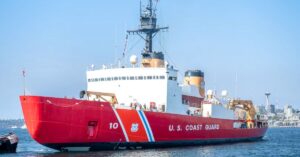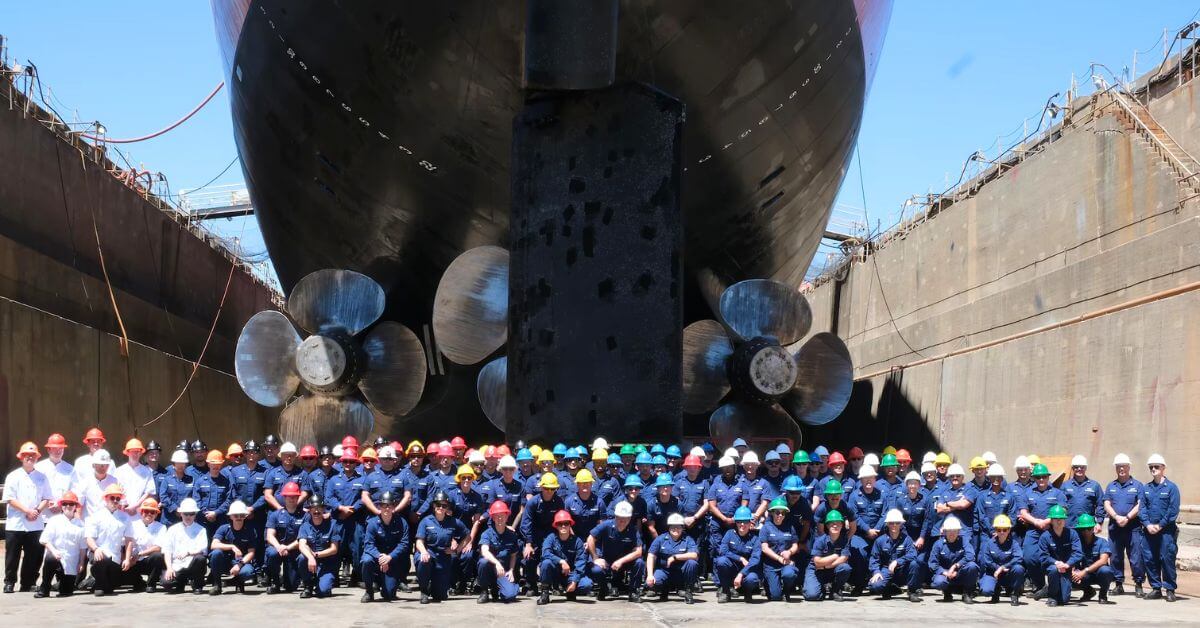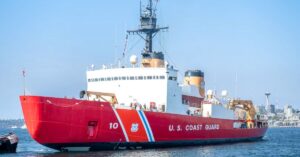
World’s First Methanol-Hydrogen Electric Riverboat “Yuanchun 001” Launched In China
September 26, 2025
Captain And Chief Engineer Arrested After 20-Year-Old Sailor Dies In Ferry Accident
September 26, 2025

The U.S. Coast Guard Cutter Polar Star (WAGB 10) returned to its home port in Seattle on September 23, 2025 after 308 days at sea, completing a historic mission and the final phase of a five-year service life upgrade to secure its future in polar operations.
The 49-year-old cutter, after completing its mission during Operation Deep Freeze (ODF) 2025, sailed directly to Mare Island Dry Dock in Vallejo, California, where it underwent the final stage of a Service Life Extension Program (SLEP). This work is designed to keep the vessel operational until the Coast Guard’s new Polar Security Cutters are ready.
Until then, Polar Star remains the only U.S. icebreaker capable of breaking through McMurdo Sound annually, supporting the U.S. Antarctic Program (USAP) and ensuring America’s strategic presence in Antarctica. The importance of this capability is growing as polar regions become increasingly significant for scientific and security purposes.

The five-year SLEP has revitalised essential systems including propulsion, navigation, communications, and machinery control. Phase Five, which began on March 30, 2024, and lasted 175 days, involved a range of upgrades valued at $12.7 million. This phase focused on:
- Gyro repeater upgrades to modernise critical navigation equipment and ensure safe operations.
- Propulsion and auxiliary systems overhaul with replacements to enhance reliability and maintainability.
- HVAC refurbishments to improve air circulation and comfort for crew during long deployments.
- Engine maintenance, including a center section overhaul on one of nine main diesel engines, supported by Coast Guard teams from Seattle and Charleston.
- Shaft servicing and inspection, replacement of all three propellers, and renewal of forward and aft main deck surfaces.
- Sanitary system upgrades, completed by the Coast Guard Yard in Baltimore.
These improvements ensure Polar Star remains fully mission-capable for polar deployments. The upgrades were supported by a coordinated effort involving Coast Guard bases and engineering teams.

Capt. Jeff Rasnake, the cutter’s commanding officer, emphasised that the completion of the five-year SLEP is a significant milestone.
Commissioned in 1976, Polar Star is 399 feet long, with a weight of 13,500 tons and a draft of 34 feet. Even after nearly 50 years of service, it is still the world’s most powerful non-nuclear icebreaker, generating up to 75,000 shaft horsepower. Over its lifetime, the cutter has played a critical role in maintaining U.S. presence in polar regions and supporting Antarctic research.
The completion of SLEP highlights the importance of the annual ODF mission, which facilitates transport of personnel, equipment, and supplies for the U.S. Antarctic Program. Since the mission began in the 1950s, the U.S. Coast Guard has consistently contributed to sustaining America’s role in Antarctica through the Joint Task Force – Support Forces Antarctica.
Reference: USCG
Source: Maritime Shipping News


